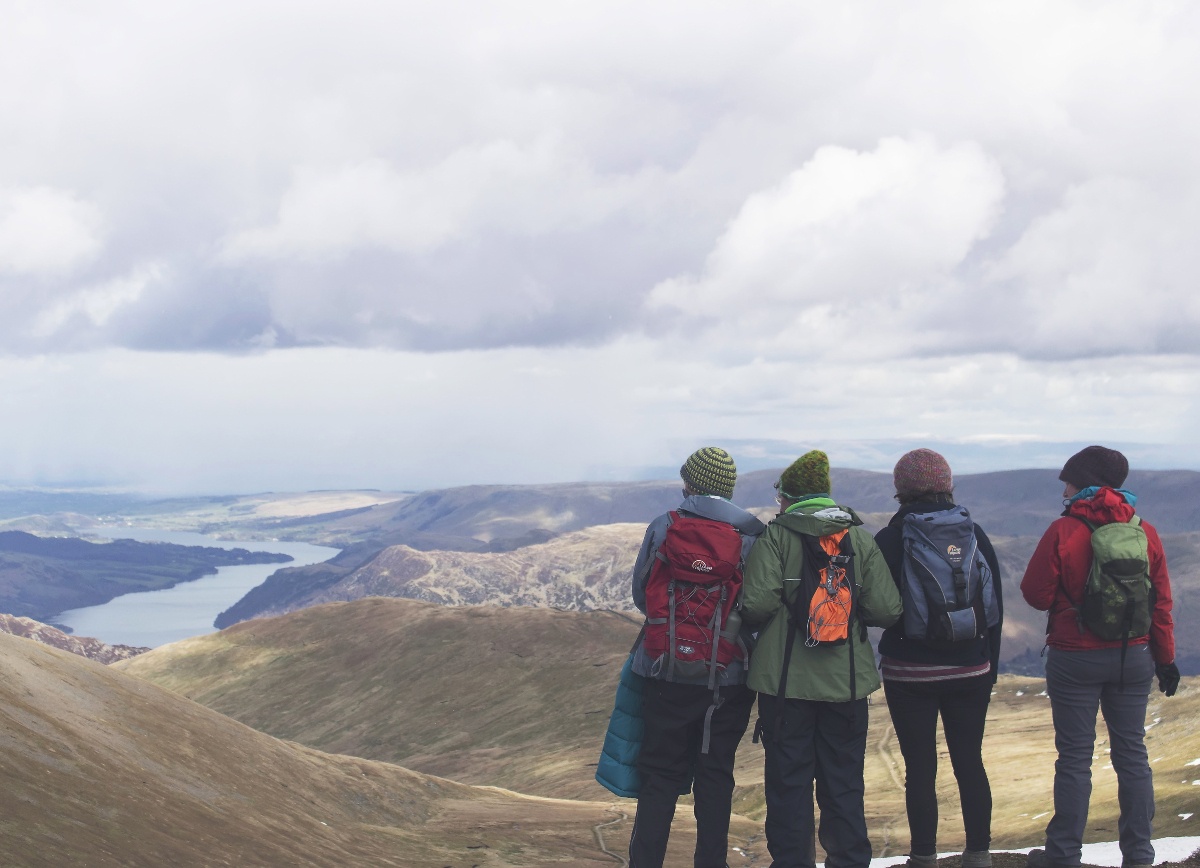
Photo by Liz Schultz.
The Setting
You and three friends are hiking through a sandy wash in the desert. Even though it is fall, daytime high temperatures have been 100°F (37.7°C) with no clouds in the sky.
Your group encounters another party of two hikers, one of whom is lying on the ground under the only small juniper in the area. The other hiker seems worried. You ask if everything is ok. One hiker is fine but asks if you can help with the patient, who he worries is dehydrated or having a “heat stroke.”
SOAP Report
Subjective
The patient is a 30-year-old complaining of fatigue, dizziness, and a headache. The patient has been hiking with a companion in the desert. This is the second day of their trip.
Objective
The patient has no mechanism for a physical injury and there are no findings on a head-to-toe physical exam except swollen fingers, which the patient says they have never had before.
Vital Signs
|
Time |
10:30 a.m. |
|
Level of Responsiveness (LOR) |
A+Ox4, according to the companion the patient is slower to respond than normal |
|
Heart Rate (HR) |
90, strong, regular |
|
Respiratory Rate (RR) |
20, regular, easy |
|
Skin Color, Temperature, Moisture (SCTM) |
pale, warm, moist |
|
Blood Pressure (BP) |
radial pulse present |
|
Pupils |
Pupils equal, round, responsive to light (PERRL) |
|
Temperature T° |
100°F (38°C) oral |
History
|
Symptoms: |
Fatigue (unanticipated since this person is fit), dizziness, dull throbbing headache. The patient denies thirst. |
|
Allergies: |
None |
|
Medications: |
None |
|
Pertinent Hx: |
No relevant medical history |
|
Last in/out: |
Yesterday the patient drank 8 liters of plain water and urinated several times. Today they drank 4 liters of plain water, ate one bagel at breakfast, and urinated once in the morning. They then drank one additional liter of water in last hour. Urine was clear. |
|
Events: |
The patient has been hiking yesterday (8 miles) and today (5 miles). They have travelled mostly in the morning and evening to avoid the midday high temperatures. The patient is wearing a broad brimmed straw hat, shorts, and a loose, thin, white cotton shirt. |
STOP READING!
What is your assessment and plan? Take a few minutes to figure out your own assessment and make a plan. Don’t cheat—no reading on without answering this first!

Photo by Jared Steinman.
Assessment
- Possible heat and/or hydration problem.
- Heat stroke is a concern, but the patient’s temperature and absence of obvious altered mental status rule it out for the time being.
- Heat exhaustion/dehydration are possible but lack of thirst, history of water intake, and clear urine argue against this.
- Overhydration/hyponatremia are also possible. Cumulative water intake, lack of food, and swollen fingers all suggest overhydration. The absence of obvious altered mental status suggests this is mild to moderate overhydration.
Plan
- Move patient off the hot ground and onto a pad. Let them rest in the shade. Sponge them with water to cool.
- Since the patient will need to rest where they are for a while, two people will hike to nearest water (2-hour round trip) and refill all containers, a combined 3-gallon capacity.
- Since you think an evacuation could be needed, two people will hike to the top of ridge and attempt cell phone contact.
- Restrict water intake and try to get the patient to eat salty snacks. Monitor condition with a focus on mental status and patient’s temperature.
- Gather the group together after water and cell phone parties return to assess and revise plan as needed.
Anticipated problems
Lack of resolution of the present problem and continued inability of the patient to travel.
Notes from NOLS on Challenging Symptoms
The overlap of vague, non-distinguishing symptoms can make differentiating overhydration/hyponatremia from dehydration, heat exhaustion, or heat stroke challenging. A patient temperature of over 104°F (40°C) indicates heat stroke. In this case, it’s higher than usual but not worrisome. A thermometer is useful for making this assessment. Abnormal mental status is another key sign of heat stroke or serious overhydration/hyponatremia.
Overhydration/hyponatremia can be easily mistaken as dehydration or heat exhaustion, leading to treatment with fluids that can exacerbate the initial overhydration/hyponatremia problem. There are case reports of this very scenario happening in the field when well-intentioned companions encourage overhydrated patients to “hydrate or die” or when overzealous ambulance crews administer unneeded IV fluids.
Because incorrectly treating overhydration/hyponatremia with fluid is more dangerous than delaying treatment of dehydration, your approach should be cautious for a patient with suspected heat-related illness but no immediate life-threats.
Recommended treatment in this case is restricting fluids and adding salty snacks while waiting for the patient to urinate excess fluid. Concentrated oral salt solutions or bouillon cubes (2 in 100 mL water) can be used like salty snacks to treat mild/moderate hyponatremia in the backcountry, but can induce nausea and vomiting.
The Story Continues...
The first team returns with 3 gallons of water. The cell phone team was unable to make contact, but spotted a well-used two track dirt road in another nearby wash. In the meantime, the patient began to urinate copiously. A few hours later, the patient is still weak but can now stand.
You and the rest of the group have stayed hydrated, rested and fed through the afternoon. Eventually, the patient says they are thirsty and begins to drink water with dissolved salt. In the cool of the evening, the group walks slowly with the patient to the dirt road when, with a stroke of luck, a dirt biker passes by. They are headed to a parking lot and can return with an ATV to give the patient and their companion a ride to town.
- Wilderness First Responder
- First Aid
- Case Studies
- Wilderness Medicine
- Heat Illness
- Hydration
- Illness & Injuries
Written By
Tod Schimelpfenig
As a NOLS Instructor since 1973 and a WEMT, volunteer EMT on ambulance and search and rescue squads since the 70s, Tod Schimelpfenig has extensive experience with wilderness risk management. He has used this valuable experience to conduct safety reviews as well as serve as the NOLS Risk Management Director for eight years, the NOLS Rocky Mountain Director for six years, and three years on the board of directors of the Wilderness Medical Society, where he received the WMS Warren Bowman Award for lifetime contribution to the field of wilderness medicine. Tod is the founder of the Wilderness Risk Manager’s Committee, has spoken at numerous conferences on pre-hospital and wilderness medicine, including the Australian National Conference on Risk Management in Outdoor Recreation, and has taught wilderness medicine around the world. He has written numerous articles on educational program, risk management and wilderness medicine topics, and currently reviews articles for the Journal of Wilderness and Environmental Medicine. Additionally, he is the author of NOLS Wilderness Medicine and co-author of Risk Management for Outdoor Leaders, as well as multiple articles regarding wilderness medicine. Tod is the retired curriculum director for NOLS Wilderness Medicine and is an active wilderness medicine instructor





